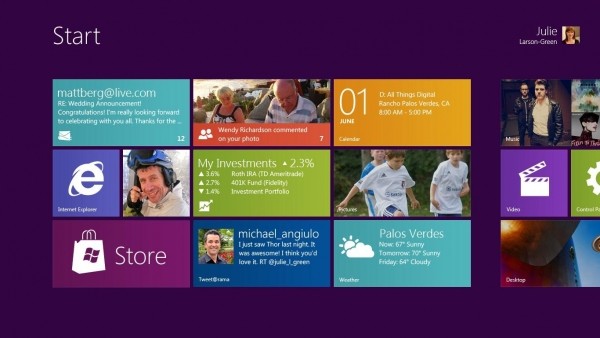Microsoft has come forward with new details about Windows 8's user interface on their recently launched Building Windows 8 blog. The latest post reveals that users will have the option to run either the Metro UI or a traditional desktop environment in Microsoft's next OS.
In the post, Windows President Steven Sinofsky says that planning for Windows 8 began in the summer of 2009 before Window 7 shipped and at that time, the company wanted to reimagine Windows from the ground up. This involved revisiting the most basic elements and assumptions about a PC. The result of this is Metro, a user interface that is heavily influenced by the UI used in Windows Phone 7.
At the same time, Microsoft realized that the familiar desktop environment was too crucial to abandon completely. Hundreds of millions of users rely on this UI and the apps it supports. Not bringing that into the next iteration of Windows would be a huge mistake. Additionally, it's no secret that some people feel that Metro is only for tablets and touch, and that converting to Metro exclusively would "dumb down" Windows 8.

As such, Microsoft decided to design Windows 8 using both interfaces in what has been described as a balancing act.
"Our design goal was clear: no compromises. If you want to, you can seamlessly switch between Metro style apps and the improved Windows desktop. Existing apps, devices, and tools all remain and are improved in Windows 8. On the other hand, if you prefer to immerse yourself in only Metro style apps (and platform) and the new user experience, you can do that as well! Developers can target the APIs that make sense for the software they wish to deliver. People can debate how much they need or don't need different aspects of the product, but that has always been the case. All of this is made possible by the flexibility of Windows."
Although it wasn't made clear in the post, someone reading between the lines could surmise that Windows 8 will boot into Metro upon startup. After that, the user could switch to the classic desktop environment if they so choose.
The next major event for Windows is the BUILD conference which runs from September 13 - 16 in Anaheim, California. More information about Windows 8 will be provided to develpers then.